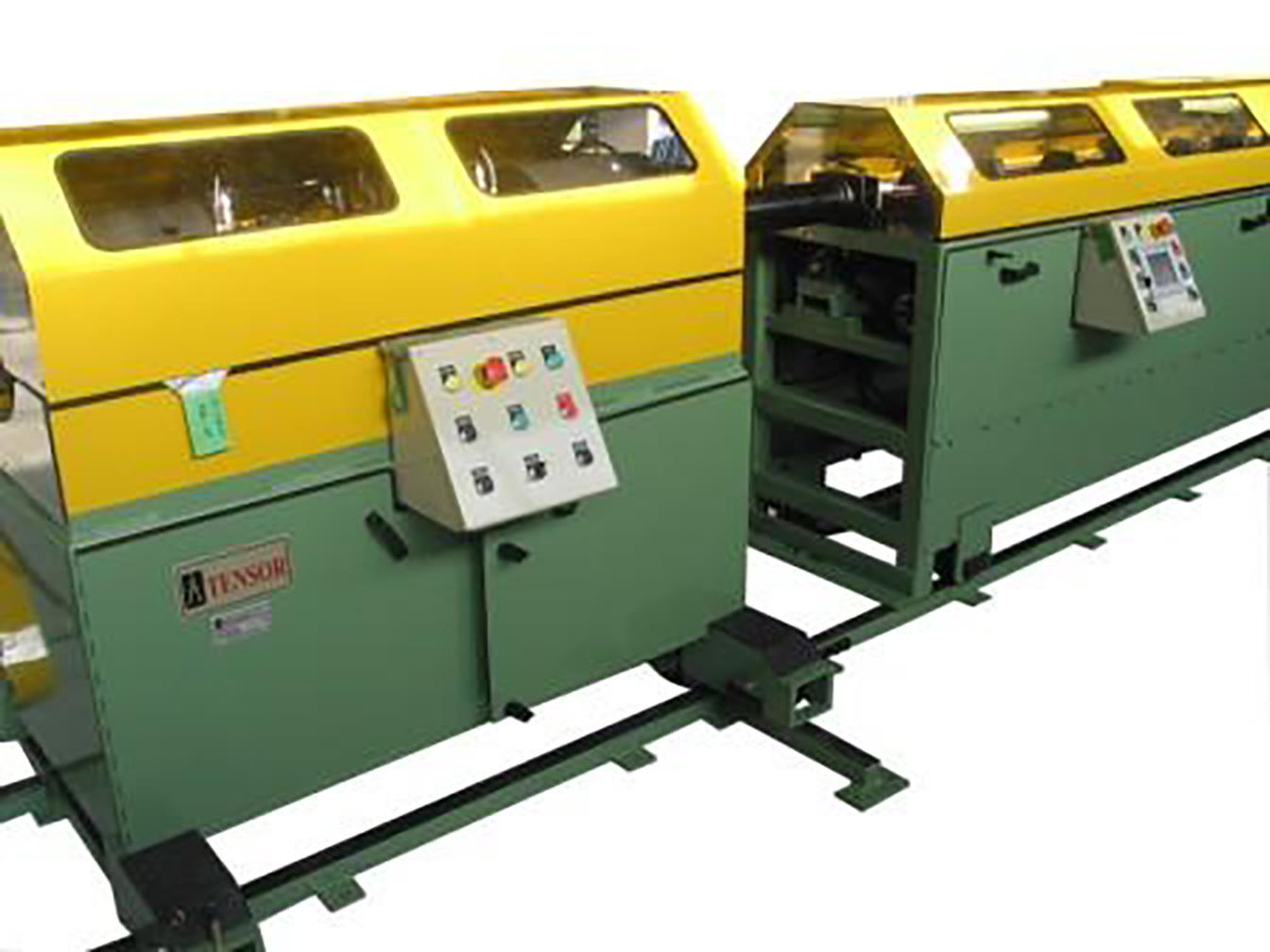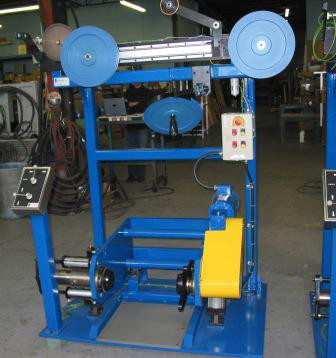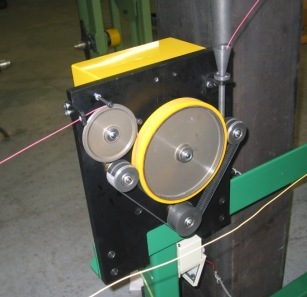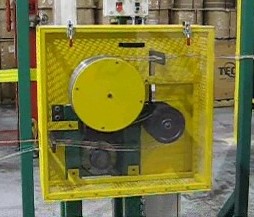
SZ Stranding of copper wire (signal cable, thermostat cable and power cable) was introduced to offset the slow speed of the traditional stranding methods. After the wires are SZ Stranded, they travel immediately into a crosshead where they are jacketed. In some cases, this method completely eliminates an entire stranding process.
The line consists of pay-offs, infeed capstan, SZ Oscillator and Binder—as well as a traditional jacketing line.

Pay-Offs
Either stem pac or wire pay-offs are used depending on the size of the wire and the lengths required. Tensor does not supply stem pac pay-offs but we do have various pay-offs for wire.
Wire Backtension Capstan
If a stem pac pay-off is used, it may be necessary to apply backtension on the wires. This is achieved using a wire tensioner. It consists of a small belt capstan and permanent magnetic brake that can be adjusted based on the tension required


Infeed Capstan
To assist the wires into the SZ Oscillator, an infeed capstan is used. This pulls the wires as the Wire Reel Pay-offs feeds them into the oscillator. The speed of the infeed capstan is adjustable.
SZ Oscillator
A 15-disk oscillator is traditionally used to twist the wires up to 14 turns in one direction before it reverses and twists 14 turns in the opposite direction. The layplates and the construction is specifically designed for the heavy gauge wires used in this process. Additional Wire Tensioner Capstan features, such as water-cooled housings, are used in some cases.
Dual Binder
In some cases where the wires are flexible or where accurate laylength are required, a dual binder is placed after the SZ oscillator. This applies a crossbinding , polyester or similar yarn around the cable to assist in holding the wires before they are jacketed. In some cases only a single binder is applied and with spare cop capability, long cable lengths can be achieved.
